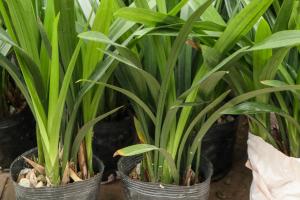Introduction
Mango trees are among the most popular fruit trees found in tropical and subtropical regions of the world, particularly in South Asia. The mango fruit is enjoyed by millions of people for its delicious flavor and health benefits. In this article, we will explore what type of plant a mango tree is and provide you with some interesting facts about this amazing tree.
Classification
Mango trees are scientifically classified as members of the genus Mangifera and the family Anacardiaceae. There are over 400 different varieties of mango trees, each with their unique characteristics, but they all belong to the same family.
Physical Characteristics
A mango tree can grow up to 100 feet tall, although most trees generally reach an average height of between 30 to 40 feet. The tree's trunk is thick and may be up to 4 feet in diameter. Mango leaves are elliptical and large, measuring up to 16 inches long and 6 inches wide. The leaves have a shiny green color on the upper side and a pale green color on the underside. The tree produces dense and lush foliage, which provides shade for the tree's fruits to grow and ripen.
Growth Habits
Mango trees are hardy and can adapt to many different soil types, from sandy to clayey. They are also tolerant of drought conditions, although they need regular watering during the fruiting season to produce high-quality fruits. Mango trees grow best in areas with temperatures ranging from 65°F to 105°F and require plenty of sunlight to thrive. The tree usually produces fruit once a year, during the summer months, with some varieties producing a second crop in the fall.
Cultivation
Mango trees can be grown from seeds, cuttings, or grafted saplings. It takes about six to eight years for a mango tree grown from a seed to start producing fruits, while trees grown from saplings can start producing fruits in as little as three years. The tree requires regular pruning to maintain its shape and size and to prevent overgrowth that may shade the fruit. Mango trees are also susceptible to pests and diseases, and growers need to apply various preventive measures to keep the trees healthy.
Conclusion
Mango trees are rich in history and have played a significant role in the cultures of many countries around the world. They have been around for centuries, and their popularity continues to grow as more people discover the benefits of eating these delicious fruits. Understanding the type of plant a mango tree is and its growth habits can help you appreciate this amazing tree even more.

 how many times do yo...
how many times do yo... how many planted tre...
how many planted tre... how many pine trees ...
how many pine trees ... how many pecan trees...
how many pecan trees... how many plants comp...
how many plants comp... how many plants can ...
how many plants can ... how many plants and ...
how many plants and ... how many pepper plan...
how many pepper plan...































